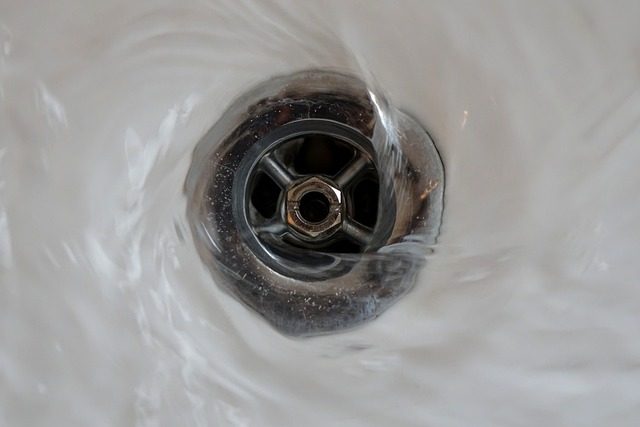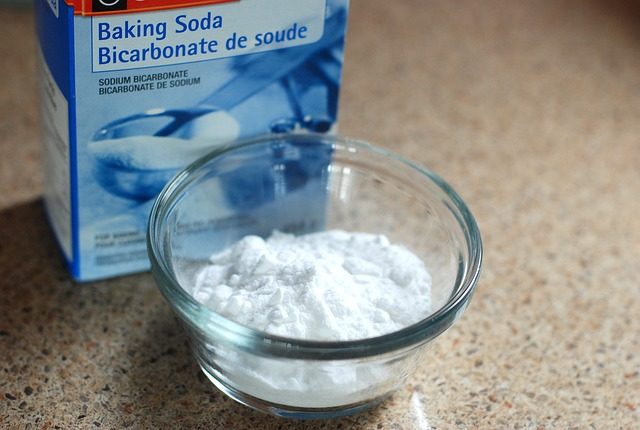Are you tired of dealing with stubborn clogs in your drains? Look no further. Discover the secrets to finding the best drain cleaner for your specific needs and learn how to prevent clogs from happening in the first place. Say goodbye to slow drains and backed-up sinks with this ultimate guide!
Table of Contents
Key Takeaways
Understand the types of drain cleaners available and their respective benefits & drawbacks.
Take safety precautions when using chemical or enzymatic drain cleaners, and consider natural solutions for minor clogs.
Implement preventative measures such as regular maintenance practices, proper disposal of grease/food particles, and installation of drain screens to reduce risk of clogs forming.
Types of Drain Cleaners: Understanding Your Options

With a plethora of drain cleaners on the market, making an informed decision can be daunting. Understanding the three main types – chemical, enzymatic, and natural solutions – is the first step towards choosing the right product.
Each has its benefits and drawbacks, but knowing the differences will help you choose the best option for your specific clog issue.
Chemical Drain Cleaners
Chemical drain cleaners are known for their impressive clearing power, making them a popular choice for tackling stubborn clogs. They contain bleach and other corrosive ingredients, providing the strength needed to break down hair, grease, and soap scum. However, these powerful cleaners come with a downside. Plumbers frequently warn about the possibility of damage to drains and plumbing systems, and the buildup of harmful fumes, when using chemical drain cleaners.
There are two primary types of chemical drain cleaners: caustic and oxidizing. Caustic drain cleaners are effective for breaking down oily grease and chemical residues like soap scum, while oxidizing drain cleaners can clear clogs caused by hair and food particles. Some popular chemical drain cleaners include Drano Max Gel, Green Gobbler Liquid Drain Clog Dissolver, and Liquid Plumr Hair Clog Eliminator.
When handling chemical cleaners, always take safety precautions to prevent any chemical reaction – wear personal protective equipment, make sure the area is well-ventilated, and follow the user manual.
Enzymatic Drain Cleaners
Enzymatic drain cleaners offer a safer, eco-friendly alternative to chemical cleaners. These cleaning agents contain enzymes, which are bacteria that break down organic soils such as hair and food particles found in drains over time. Enzymatic cleaners are non-toxic and biodegradable, making them safe for all plumbing and septic systems.
Although enzymatic cleaners may not work as quickly as their chemical counterparts, they are effective in clearing clogs and are safe for both your pipes and the environment.
Natural Solutions
For those seeking a more eco-friendly and budget-friendly option, natural solutions such as baking soda and vinegar are excellent alternatives to chemical and enzymatic drain cleaners. The combination of baking soda and white vinegar produces a fizzy, bubbly reaction that releases carbon dioxide, which helps dissolve clogs and allows them to be washed away.
Although not as potent as chemical cleaners, natural remedies are safe for all plumbing and septic systems. They can be quite effective in clearing minor clogs, such as slow drains and soap scum buildup.
Top 5 Drain Cleaners for Different Clog Types

Having explored the different types of drain cleaners, let’s now examine the best choices for dealing with specific types of clogs. Clogs can be attributed to:
Hair
Grease
Soap scum
Food particles
Each type of clog, including tough clogs, requires a specialized approach to effectively clear the blockage.
Read on to discover the top drain cleaners for tackling each type of clog and restore your drains to their optimal flow.
Best for Hair Clogs
Hair clogs are a common issue in sinks, showers, and bathtubs due to the tendency of hair to become trapped in the drain, causing a blockage. For hair clogs, Drano Max Gel, Green Gobbler Liquid Drain Clog Dissolver, and Liquid Plumr Hair Clog Eliminator are the most effective options.
These chemical drain cleaners are specifically formulated to break down and dissolve hair, ensuring your drains are free from obstruction. Remember to follow safety precautions when using a chemical drain cleaner, such as wearing personal protective equipment and ensuring proper ventilation.
Best for Grease Clogs
Grease clogs are a frequent occurrence in kitchen sinks due to the improper disposal of grease, fat, and oil down the drain, often leading to a backed up sink. Enzymatic and chemical drain cleaners are both effective for tackling grease clogs.
Drano Max Gel Drain Clog Remover, Green Gobbler Liquid Drain Clog Remover & Cleaner, and Rejuvenate are top choices for clearing grease-related clogs. When using these cleaners, allow them to work for at least 15 minutes, or as instructed on the product label, to ensure optimal results.
Best for Soap Scum
Soap scum buildup is a common issue in bathroom sinks and showers, resulting from the combination of soap residue and hard water minerals. To effectively clear soap scum clogs, natural solutions like baking soda and vinegar, as well as chemical drain cleaners, are your best options. Additionally, using toilet paper instead of paper towels for wiping surfaces can help reduce soap scum buildup.
Drano Max Gel Drain Clog Remover, Green Gobbler Liquid Drain Clog Remover & Cleaner, and Rejuvenate are highly effective for removing soap scum, leaving your drains clean and free-flowing. As always, follow safety precautions when using chemical cleaners to ensure a safe and effective cleaning process.
Best for Food Particles
Food particle clogs are a prevalent issue in kitchen sinks and garbage disposals due to the improper disposal of food waste down the drain.
Enzymatic drain cleaners and chemical drain cleaners, such as Drano Max Gel Liquid Clog Remover, Liquid-Plumr Hair Clog Eliminator, and Green Gobbler Liquid Drain Clog Dissolver, are the most effective options for clearing food particle clogs. When using these cleaners, adhere to safety measures such as wearing personal protective equipment, ensuring proper ventilation, and following product instructions.
DIY Drain Cleaning: Baking Soda and Vinegar Method

If you’re facing a minor clog or simply prefer a do-it-yourself approach, the baking soda and vinegar method is an excellent option for clearing clogs in your drains. This natural solution is not only budget-friendly but also eco-friendly, making it an ideal choice for maintaining clean drains in your home.
Let’s explore the step-by-step process for using the baking soda and vinegar method to unclog your drains.
Preparing the Drain
Before using the baking soda and vinegar solution, ensure the drain is ready by following these steps:
Eliminate any standing water and debris.
Bring a kettle or pot of water to a boil.
Carefully pour the boiling water down the drain. This helps dissolve any minor clogs and clears the way for the baking soda and vinegar to work their magic.
Mix equal parts of baking soda and vinegar in a bowl and pour the mixture down the drain.
Mixing and Applying the Solution
To create the baking soda and vinegar mixture, follow these steps:
Pour 1/2 cup of baking soda into the drain.
Pour one cup of vinegar down the drain.
You’ll notice a fizzy, bubbly reaction as the baking soda and vinegar combine.
This reaction releases carbon dioxide, which helps to dissolve clogs and allow them to be washed away.
After applying the solution, cover the drain with a drain plug or a damp cloth and let it sit for 5 to 10 minutes to allow the reaction to take place.
Flushing with Hot Water
Once the solution has done its job, flush the drain with hot water to remove any leftover residue. Bring another kettle or pot of water to a boil and carefully pour the boiling water down the drain. This will help to further dissolve any lingering debris and ensure your drain is completely clear.
Be cautious when pouring boiling water to avoid potential burns, and consider wearing protective gloves for added safety.
Safety Tips for Using Drain Cleaners
Though drain cleaners efficiently clear clogs, safety should remain a priority when utilizing them. Whether you’re using chemical, enzymatic, or natural drain cleaners, following proper safety precautions will help protect you and your plumbing system from potential harm.
Here are some vital safety tips to follow when using drain cleaners.
Personal Protective Equipment
One of the most important safety measures when using drain cleaners is wearing personal protective equipment (PPE). This includes gloves and eyewear, such as safety glasses or goggles with side shields.
Wearing PPE helps protect your hands and eyes from the caustic chemicals found in drain cleaners, ensuring a safe and effective cleaning experience.
Ventilation and Avoiding Fumes
Proper ventilation is crucial when using chemical drain cleaners to reduce exposure to harmful fumes. Open windows or use exhaust fans to ensure adequate airflow in the area where you’re working with the drain cleaner.
If you accidentally inhale fumes, move to an area with fresh air immediately. Remember, a well-ventilated space is essential for a safe and effective drain cleaning experience.
Following Product Instructions
Lastly, reading and adhering to the product instructions given by the drain cleaner manufacturer is crucial. Each product may have specific guidelines for use, including the recommended amount to pour down the drain, how long to let the cleaner sit, and any additional safety precautions to take during the process.
By following these instructions, you can ensure a safe and effective drain cleaning experience, minimizing any potential risks or damage to your plumbing system.
Preventative Measures for Clog-Free Drains
Avoiding clogs before they occur is the optimal way to keep drains clean and reduce the frequency of drain cleaning. By implementing regular maintenance practices, properly disposing of grease and food particles, and installing drain screens, you can keep your drains flowing smoothly and reduce the risk of clogs.
Here’s a more detailed look at these preventative measures.
Regular Drain Maintenance
Establishing a routine drain maintenance schedule is a highly effective method to prevent clogs and unclog drains. This can include using chemical, enzymatic, or natural drain cleaners on a regular basis to clear any buildup in your pipes. You can also pour boiling water down your most used drains weekly to help maintain their clarity and reduce the risk of clogging.
By staying proactive with your drain maintenance, you can extend the lifespan of your drains and prevent the need for more drastic and costly plumbing repairs, such as dealing with a slow drain.
Proper Disposal of Grease and Food Particles
Grease and food particles are common culprits behind clogged drains, especially in kitchen sinks and garbage disposals. To prevent these clogs, it’s important to properly dispose of grease, oil, and fat by placing them in a sealed container and throwing them in the trash instead of pouring them down the drain.
Additionally, using a drain strainer in your kitchen sink can help capture food particles and prevent them from entering the drain. By being mindful of what goes down your drains, you can greatly reduce the chance of clogs forming.
Installing Drain Screens
Installing drain screens is another effective preventative measure for avoiding clogs. Drain screens are designed to catch hair, food particles, and other debris before they enter the drain and cause blockages. They come in a variety of materials, such as metal, plastic, and rubber, and can be easily installed in sinks, showers, and bathtubs.
Inspect and clean your drain screens regularly to ensure they continue to prevent debris from entering your drains effectively.
Learn more, visit 7 Simple Tips to Prevent Shower Drain Clogs.
Summary
In summary, finding the best drain cleaner for your specific needs doesn’t have to be a daunting task. By understanding the differences between chemical, enzymatic, and natural drain cleaners, you can choose the best solution to tackle your clogs. Don’t forget to follow safety precautions, implement regular maintenance practices, and take preventative measures to keep your drains flowing smoothly. With these tips in mind, you’ll be well on your way to a clog-free home.
Frequently Asked Questions
What is the best solution to clean drains?
For a quick and effective solution, pour half a cup of baking soda down your drain, followed by half a cup of white vinegar. Let it sit for 15 minutes and flush with boiling water afterwards to clear the drain.
Does baking soda and vinegar really clean drains?
Baking soda and vinegar can be effective in clearing minor clogs, but for tougher clogs, you may need to use a stronger drain cleaner. If the clog is weaker, the combination of vinegar and baking soda can help break it down without the use of harsh chemicals.
What will unclog a drain naturally?
Unclog a drain naturally by combining baking soda and salt, then pouring 1/2 cup of each down the drain followed by 1 cup of vinegar. Let sit for 8 hours, then flush with boiling water. If problem persists, call a plumber.
What types of drain cleaners are available?
Chemical, enzymatic, and natural drain cleaners are all available options for tackling clogged drains.
Which drain cleaner is best for hair clogs?
For effective hair clog removal, Drano Max Gel, Green Gobbler Liquid Drain Clog Dissolver, and Liquid Plumr Hair Clog Eliminator are the best choices.









